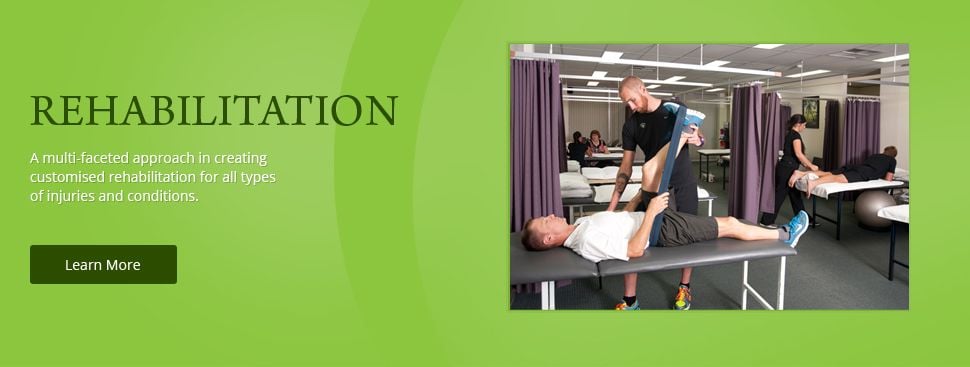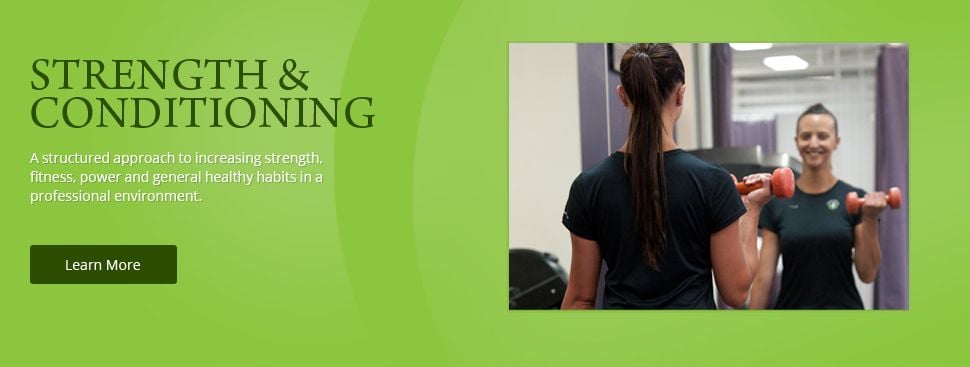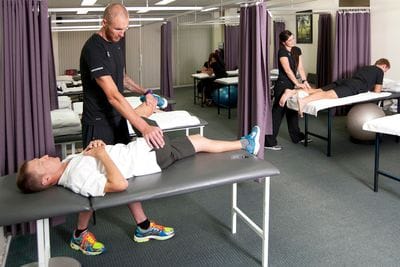Exercise Physiology
Mention the code "Fit 101" for $5 off your initial exercise physiology consultation when you book online

Stitches
Much like Muscle Cramp, almost all athletes have experienced a Stitch at some time. Stitches to can range from mildly uncomfortable to debilitating for recreational exercisers and elite athletes.
What is a stitch?
Stitches are scientifically referred to as Exercise-related Transient Abdominal Pain and are described as localised pain usually felt on the side, just below the ribs, sometimes accompanied by a stabbing sensation in the shoulder joint. The pain can range from sharp or stabbing to mild cramping, aching or pulling. Sometimes people can exercise through the stitch, though usually they are forced to slow down or cease exercise.
Stitches usually disappear within a few minutes after ceasing exercise, however, some people experience some residual soreness for a few days, especially after severe pain. While the stitch seems to be more prevalent in activities that involve vigorous upright, repetitive movement of the torso e.g. running; it can occur in any type of sporting activity.
What causes stitches?
The exact cause of stitches, like muscle cramps, is unknown. They were thought to be caused by a reduction in blood supply to the diaphragm, a large muscle involved in breathing. It was thought that during exercise, blood was shunted away from the diaphragm and redirected to exercising muscles. However, both the diaphragm and the limb muscles need to work harder during exercise, so it is unlikely that an inadequate blood flow is directed to the diaphragm.
Another theory is that stitch is caused by organs pulling on ligaments that connect the gut to the diaphragm. Jolting during exercise may cause these organs to pull on the ligaments and create stress on the diaphragm, though this theory does not explain the incidence of stitches in athletes involved in sports not involving a jolting action e.g. swimming.
A more recent idea is that stitch is caused by irritation of the parietal peritoneum. Two layers of membrane (peritoneum) line the inside wall of the abdominal cavity. One layer covers the abdominal organs, while the other layer (parietal peritoneum) attaches to the abdominal wall. The two layers are separated by lubricating fluid, which allows the two surfaces to move against each other without pain. It is thought that the stitch occurs when there is friction between the abdominal contents and the parietal peritoneum. This friction may be caused by a distended (full) stomach or a reduction in the lubricating fluid. The parietal peritoneum is also attached to a nerve, that refers pain to the shoulder, which may explain the shoulder pain that has been described by some athletes.
How can I avoid stitch?
Eating too closely to exercise seems to increase the chances of athletes experiencing a stitch during exercise. High-fat and fibre foods are more likely to cause problems. The likelihood of stitch occurring may be reduced by allowing 2-4 hours before exercising after a large meal.
Immediately before and during exercise, athletes should avoid consuming highly concentrated fluids such as soft drink, cordial and fruit juice, as they seem to increase the risk of stitches occurring during exercise. These type of drinks empty more slowly from the stomach than both water and sports drink, thereby leaving the stomach more distended for longer.
How should stitch be treated?
Sometimes the stitch eases if you slow down and drop your intensity for a period. However, the most common way to alleviate stitch is to bend forward while pushing on the affected area and breathing deeply. Sometimes this can be done while exercising but usually the pain eases more quickly when exercise is ceased. Another option is to lie down while elevating your hips.
The stitch is rarely a sign of more serious problems. However, any pain that is regular, persistent and does not ease when exercise ceases should be investigated by a doctor.


)
)
)




